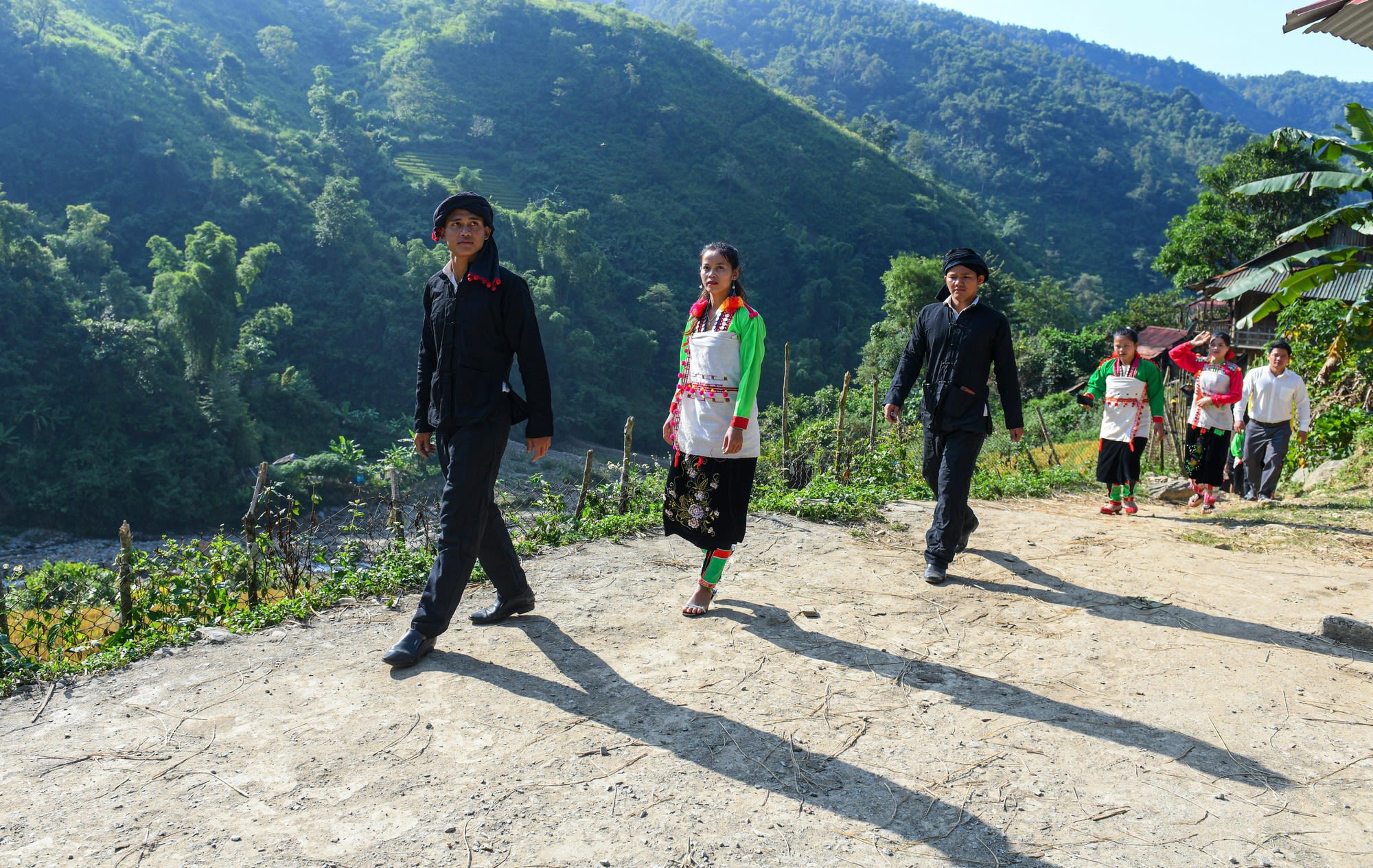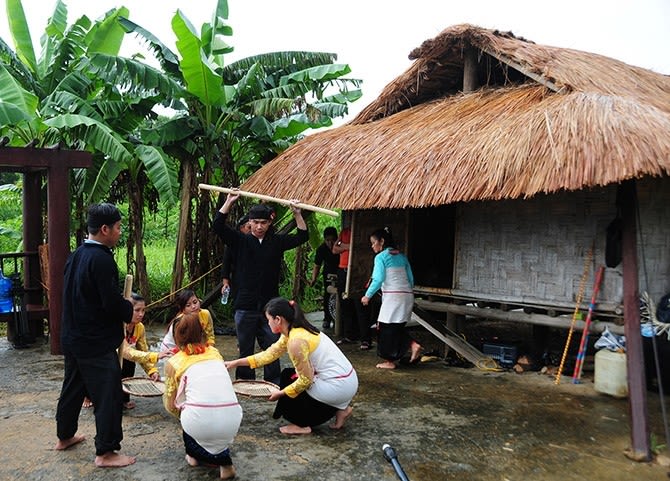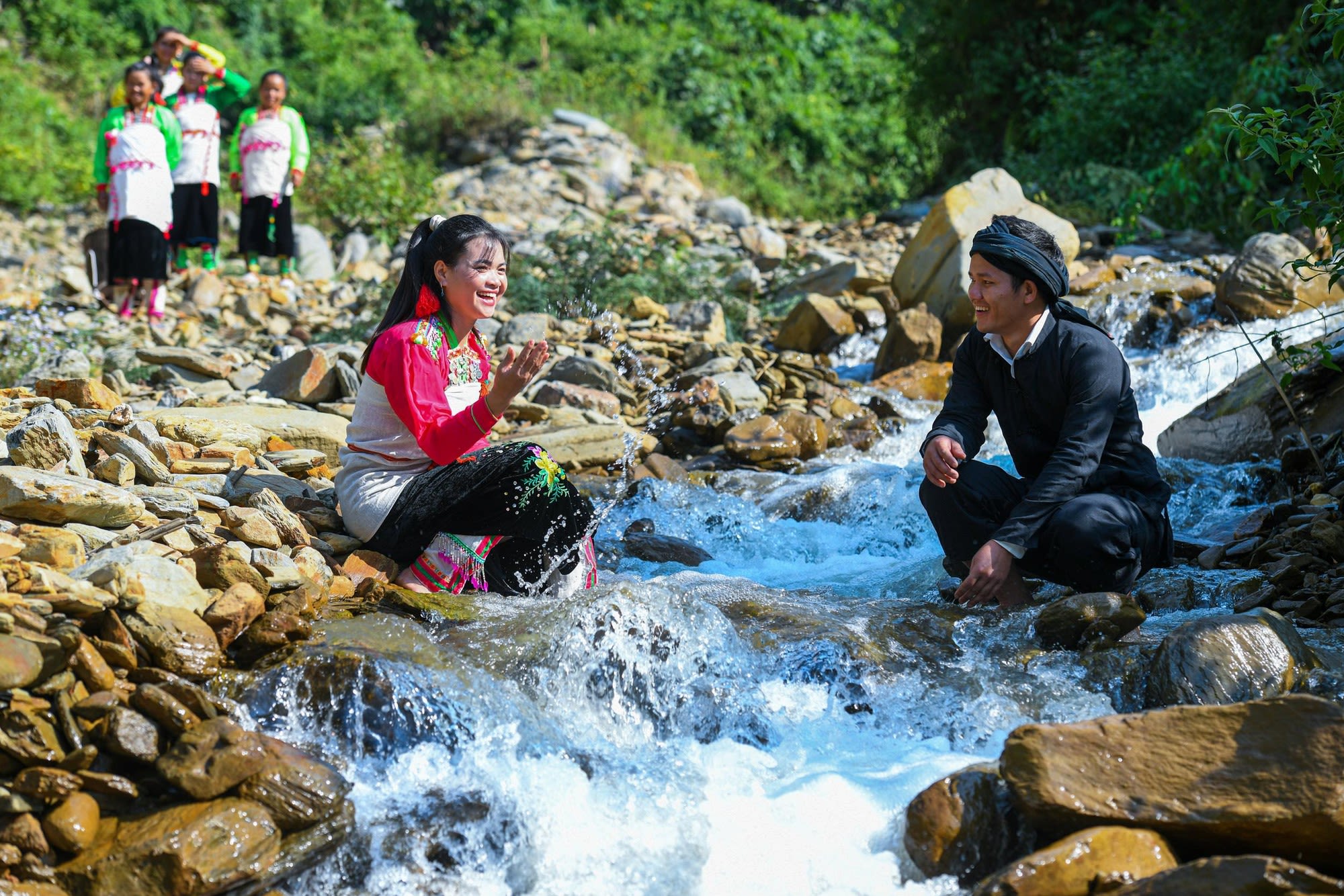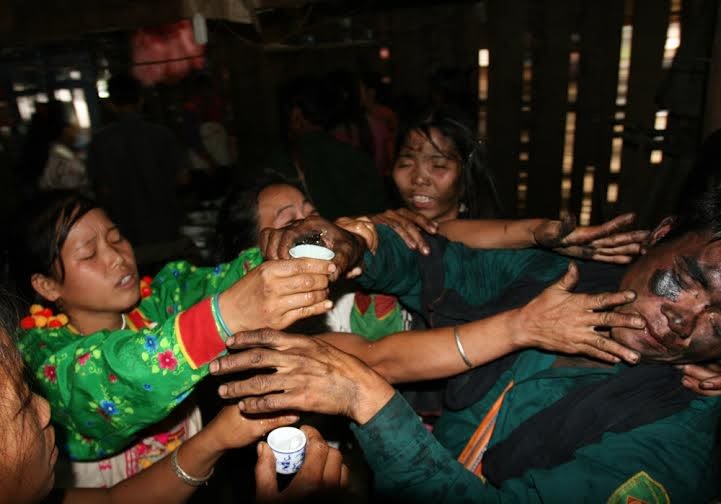
Living along the northern border of Vietnam, although being one of 16 ethnic groups with a very small population in the country, the Mang ethnic group still retains its unique traditional culture.
1. History
In the past, the Nam Ban (Dum Bai) area of Nam Ban Commune, Sin Ho District, Lai Chau Province was still called the “homeland” of the Mang people. The Mang are one of the indigenous peoples in the Northwest region.
Self-name: Mang.
Other names: Mang U, Xa Mang, Nieng O, Xa Ba O.
Local groups: Mang Gang, Mang System.

Photo: THANH DAT
Photo: THANH DAT
2. Population
According to the census of the 53 ethnic minorities, as announced on April 1, 2019, the total population of the Mang ethnic group is 4,650. Of whom, 2,313 are male and 2,337 people are female. Household size: 4.8 people/household. 97.4% of the population lives in rural areas.
3. Geographical distribution
Concentrated in Lai Chau province, stretching across the northern border area, bordering China.
4. Language
The Mang language belongs to the Mon - Khmer language group (Southern - Asian language family). According to a survey by the People's Committee of Lai Chau Province, the Mang people preserve their language quite well, 100% of the people use their language in daily life. When communicating with other ethnic groups, some Mang people can speak Vietnamese, Thai, Ha Nhi and Hmong.
Education: According to census data of 53 ethnic minorities on April 1, 2019, the rate of people aged 15 years and older who can read and write reached 46.2%. The proportion of people at the primary level is 104.3%, people at lower secondary schools is 88.9%, and people at high school is 38.8%. Meanwhile, the rate of out-of-school children is 14.3%.

The rice-pounding dance to celebrate a new home during the New House entrance ceremony of a Mang family (Photo: Vietnam National Village for Ethnic Culture and Tourism)
The rice-pounding dance to celebrate a new home during the New House entrance ceremony of a Mang family (Photo: Vietnam National Village for Ethnic Culture and Tourism)
5. Main features
Cuisine: The Mang have two meals: lunch and dinner, corn is the main food, corn is mixed with cassava or mixed with a little parboiled rice. Salted young cassava leaves are almost the year-round food of the Mang people. They like to smoke pipe tobacco and drink white wine.
Costumes: The unique feature of Mang women’s clothes is the cape wrapped around the body, cut and sewn with white raw fabric, embroidered with red thread in the middle. The head is bare, the hair is tied into a ponytail with a beautiful tassel, and the legs are wrapped in leggings.
Face tattoo custom: In the past, both Mang men and women had to have their faces tattooed (also known as mouth tattoos or chin tattoos). This is an obligatory rite of passage when boys and girls come of age (boys from 16-18 years old, girls from 15-16 years old), with the main purpose of being recognised as official members of the community. Thanks to the tattoo on the face, after death, the ancestors in heaven will recognise that they are from the same family and allow the soul to live with them.

Photo: THANH DAT
Photo: THANH DAT
Social relations: The head of the traditional social organisation is Pogia. The Ban (Muy) organisation still maintains its traditional practices. The village has a village head in charge of the collection of taxes. In the village, there is usually a large family, the head of the family, together with the village elders council, governs all social and religious activities according to custom. The Mang people have five main families, each of which takes an animal as a totem.
Housing: Although the Mang’s house is very temporary, from the stage of choosing the land, levelling the ground, and erecting the columns to the roofing, they have to ask a fortune teller to check the date and time before proceeding to build the house. This ceremony includes many complex ritual features expressing ethnic characteristics.
Holidays: In addition to the Lunar New Year, the Mang people celebrate New Year’s Eve after the 10th lunar month harvest. Every year, the villagers also offer ghosts and house ghosts, to ask for peace. They have a series of rituals related to agriculture: sowing ceremony; offerings to the soul of rice, to the mother of rice; worship after the harvest.
Worship: House ghosts are worshipped on Tet holiday or when someone in the house is sick. Mang people have many ghosts, in which house ghosts have a particularly important position. Besides, they also worship Dam - their ancestors and clans.
Arts: The folk song "Xoong" is known and loved by many people. Today, the Mang people still keep a legend about their ancestral land, which is Muang Buang, a place on the mountainside in Nam Ban Commune, Sin Ho District (now in Nam Nhon District).

At Mang weddings, relatives smear pots and mud on each other to pray for good luck. (Photo: Lai Chau Newspaper)
At Mang weddings, relatives smear pots and mud on each other to pray for good luck. (Photo: Lai Chau Newspaper)
6. Economic conditions
Upland farming is the main livelihood of the Mang people. Previously, the Mang people raised small cattle, and later on, large cattle; knitting especially developed, reaching a sophisticated level, while weaving did not develop; Woven products are mainly exchanged with Thai people for garment products. In addition, hat sewing is also very developed, and used to exchange or sell to Thai people.
According to census data of 53 ethnic minorities on April 1, 2019: The rate of poor households was 66.3%, the rate of near-poor households was 10.2%; the Unemployment rate was 0.67%; the Rate of trained workers with degrees and certificates was 4.0%; Proportion of labourers working in the non-agricultural sector was 1.7%; Proportion of households doing traditional crafts was 0.11%.